When I think back to Twin Peaks Episode 25, I fondly remember Gordon meeting Shelly for the first time, Dale’s silly penguin joke, and even Ben Horne passing a carrot like a cigar to John Justice Wheeler. It’s a fun, healing kind of episode, but it’s not a fluffy one, not at its foundation. Turns out, the deeper I look into this, it seems love can open the door to Lodgespace influence just as easily as fear does. When you’re in love, there’s a certain ungrounded “wouldn’t it be nice” feeling when your head and heart are in the clouds. Just like with fear, you can get caught up in love, and it makes you stop clearly seeing the earthly world around you.
Not only does it leave one imbalanced, but there’s also a danger in opening your heart. Because while your love has opened the door, you don’t necessarily know what else you’re letting in while you’re unable to see it. In this absurdist period of Season 2, all of this metaphor is turned into the tangible literal, whether you’re having a nightmare or daydreaming about love.
The Log Lady Intro
“The beautiful thing about treasure is that it exists. It exists to be found. How beautiful it is to find treasure. Where is the treasure, that when found, leaves one eternally happy? I think we all know it exists. Some say it is inside us—inside us one and all. That would be strange. It would be so near. Then why is it so hard to find, and so difficult to attain?”
Treasure, before you get it, is a “want,” but it sounds like—once again—what you want isn’t what you need—and it’s about as tangible as a dream.
I last wrote about Episode 21, which focuses on how fear manifests into horror movies and grand Civil War delusions. Today, I’ve discovered that love can manifest some things as well, but it’s not all wonderful. Things can get dangerous for people blinded by love in Twin Peaks. When all you’re seeing is the positive, the negative doesn’t exist to you—and in this show, that leaves you vulnerable. Characters tuned in to a negative frequency can ride in unnoticed and accumulate power over you or over a situation. Because like everything else, fear and love can both be used as tools or as weapons.
Jones Literally Uses Harry’s Love For Josie as a Weapon
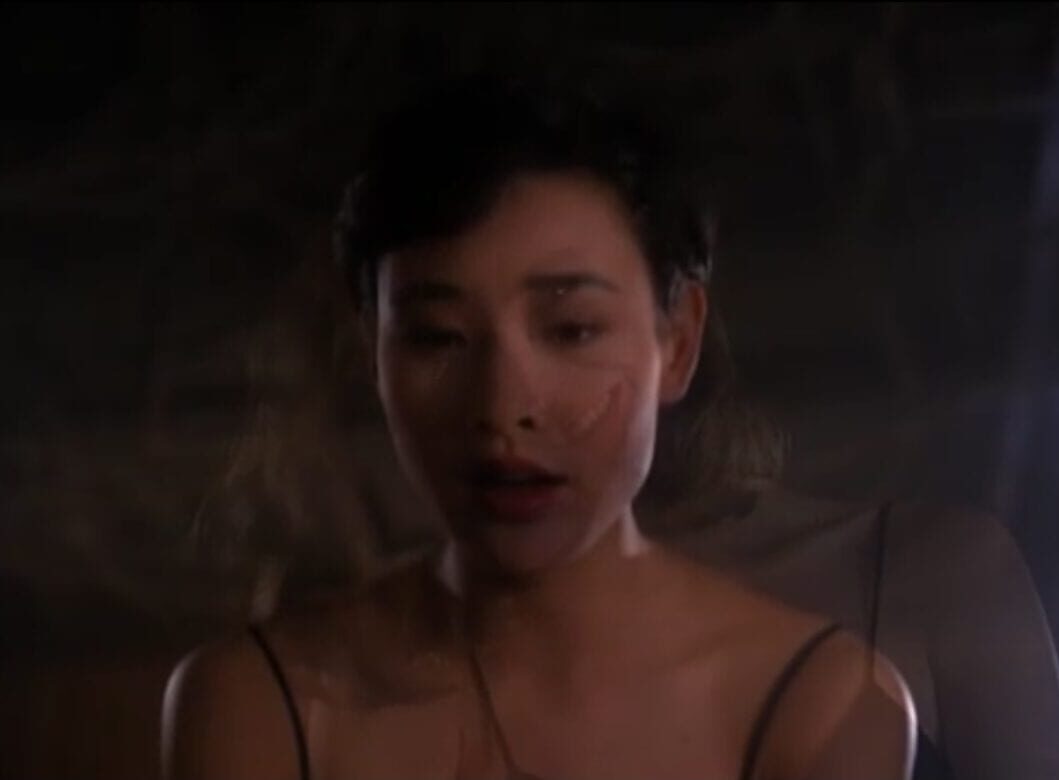
Why does Jones put her spooky tincture on her lips to seduce Harry as Josie before she tries to kill him? Because that will lower Harry’s guard. He won’t be able to see Jones trying to kill him if he’s hallucinating about the woman he loves.
From a metaphorical standpoint, it makes sense: it’s dangerous to love Josie Packard. But why does Jones have her magic tincture to actively create this illusion? Is Jones knowledgeable of the weakened barrier between Lodgespace and the world?
Jones has no provable connection to Lodgespace, but Josie is 100% connected to the Lodge. Josie is taken into the drawer pull after she kills Jones’ boss, Thomas Eckhardt, and literally dies of fear. Then BOB and the Little Man From Another Place immediately appear. There’s no way we can explain how or why without conjecture, but there’s a verifiable connection all the same.
Based on Jones’ tincture, I’ll assume Eckhardt is as connected to Lodgespace as Josie. He’s likely using that connection to grab power, just as Windom Earle is striving to do in this episode. And in this case, Eckhardt and Jones would be tapping into that Lodgespace power to conjure Josie’s memory and bring death to Harry. Regardless of how it happens, Harry’s blind love for Josie almost gets him in a heap of trouble.
It’s similar to how the bonsai tree “from Josie” masks Earle’s infiltration. That supposed gesture of love creates enough light in those at the Sheriff’s station to shine it on secrets, so it helps, but under false pretense. That’s probably why Earle’s involvement is revealed, and also why it’s only revealed to the viewers who aren’t under Josie’s spell.
Audrey and John Justice Wheeler: “Be Yourself”
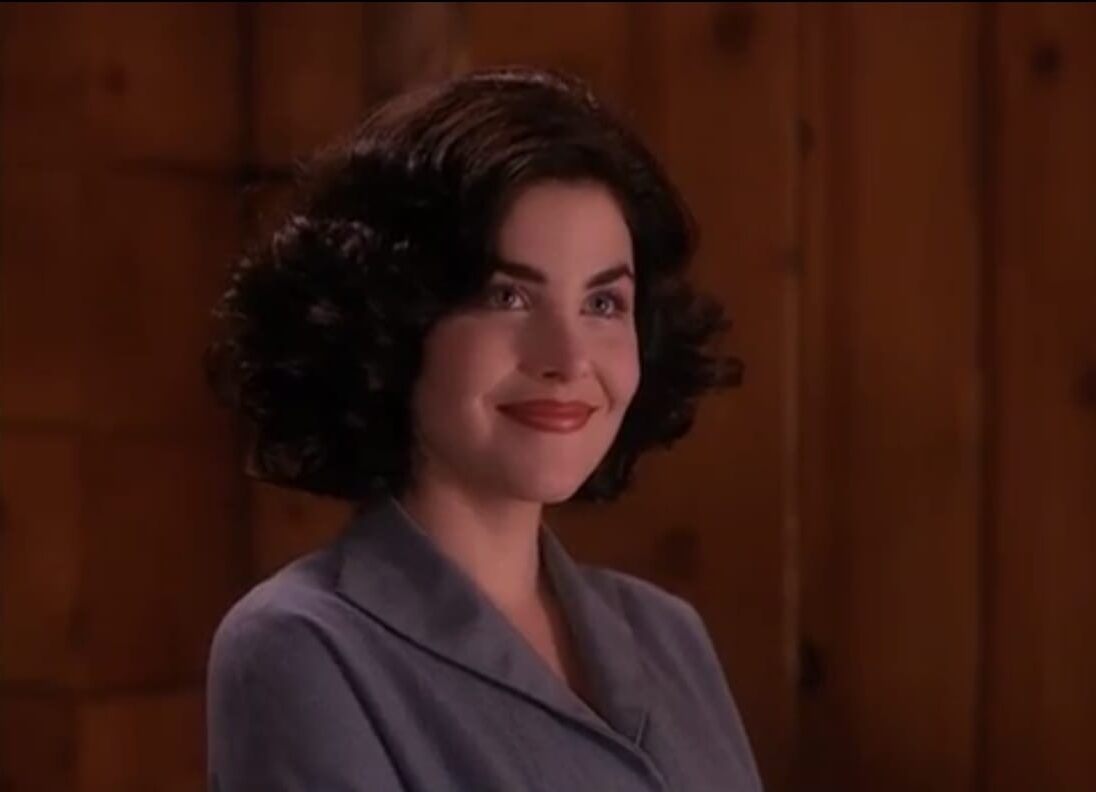
On a personal level, to be balanced you have to be yourself. And for love to be balanced, you have to recognize when the person you’re learning to love is being themselves. John Justice Wheeler and Audrey Horne may have some strange material to pass for flirting language—hammers and nails—but when Audrey pulls away from a quick kiss because JJW says “Be yourself,” he finally realizes she was being herself. He stops playing a game and declares what he believes Audrey’s characteristics are, and she glows because she’s being seen by him.
Audrey and JJW are on their way to something special because Audrey knows he can see her authentic actual self, rather than a fantasy or what she lets others see of her curated bravado. Besides a trip to a private jet—and pardon the play on words—they’re building trust with those hammers and nails.
I Love How You Love Me
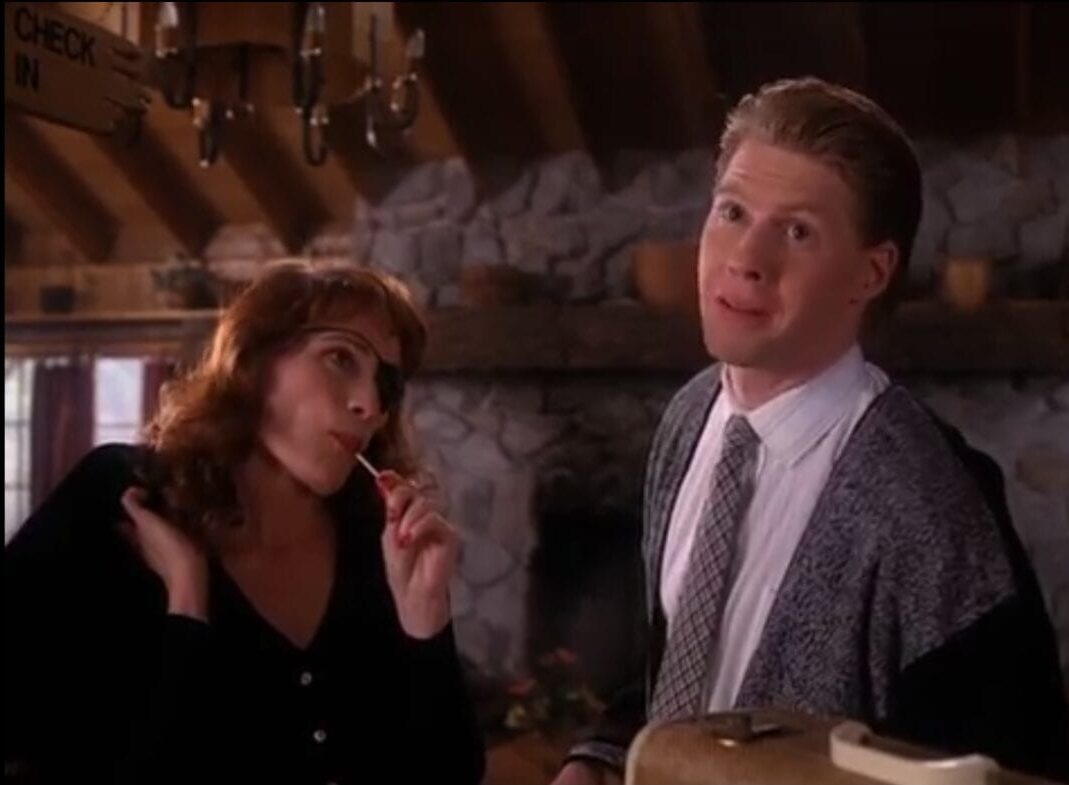
Nadine and Mike are also on a train of positive energy where they’ve grown into quite the adorable couple, but their love isn’t based on trust as much as delusion. Nadine’s more herself than she’s ever been, except she has to “become” an 18-year-old to feel this safe. She’s feeling a positive frequency, but she’s hiding from the world while she heals herself. It obviously follows the same show rules as Ben Horne’s Civil War delusion, but this reminds me more of Becky Burnett in Season 3 Part 5 while in the car after just taking Sparkle.

Becky’s face is absolutely euphoric and in love with her experience, but it isn’t at all anchored in reality, nor is she acknowledging just how much negativity Steven is capable of. Just like Becky, Nadine’s given herself a shield so she doesn’t have to think about what made her want to kill herself in Episode 7.
Nadine is hurt but healing and Mike is probably forced into a similar disconnection from reality to be on the same wavelength. As cute a couple as they make here, it’s hard to rationalize how they got where they are. I don’t think it’s exactly Stockholm Syndrome that brought Mike to be loyal to Nadine, but it’s not out of the question.
Tell The Hardest Truth First
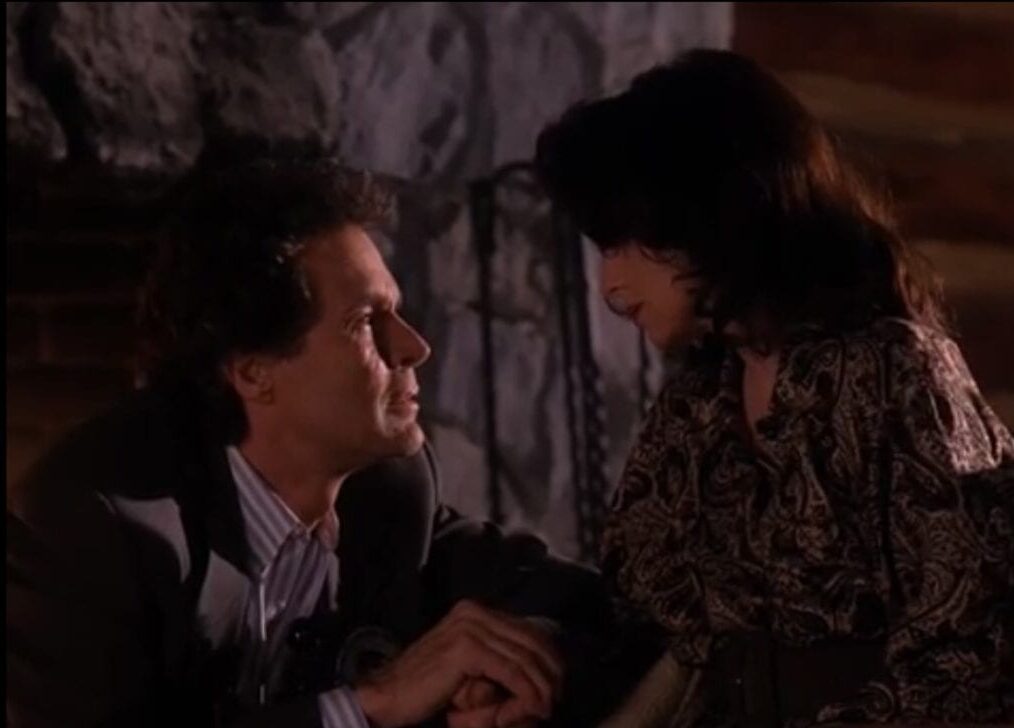
Ben Horne—fresh off his delusional stint as Robert E. Lee—is in a similarly precarious positive delusion. This time he only wants to be like John F. Kennedy, but he doesn’t yet know how to be good, and by hell or high water he wants to learn the ways. Clearing his conscience might make him feel better, but revealing truths blindly—especially to Donna Hayward about her true parentage—needs more nuance and consideration. His air sacks may never have been cleaner, but as Doc Hayward says, Ben’s a ticking time bomb.
Ben’s Season 2 path is in line with Dale Cooper’s path in Season 3. Both men live in a delusional state of mind for some time—Ben as Lee and Cooper as Dougie—but wake up as themselves. And they both wake up out of balance. Ben is obviously not a “complete” Ben Horne yet, and Cooper is still integrating as he finds Carrie Page. Dale wants to be good, but he doesn’t know how to shake off all of Mr. C’s tendencies yet. But unlike Cooper, Ben understands he doesn’t know how to be good and asks for help from JJW. There’s a good chance Ben will find his balance once he passes through this “extra-good” phase of his character evolution.
Two Penguins Are Walking Across an Iceberg
In Season 3, Dale may go through a delusional state based on love which is followed by a delusional state based on fear, but here in Episode 25 he’s following both frequencies but alternating between them one at a time. It’s as if he’s beginning to separate already, four episodes before we physically see his doppelganger. Could this be that beginning?
Dale is mostly focused on his job—enough so to be reinstated. This is when he and Gordon share the motto of the Twin Peaks universe’s version of the FBI: “Pursue, Capture, Incarcerate.” And this is where I have to take a quick aside to point out how this implies the plan to find Judy that Gordon reveals in Season 3 Part 17 probably doesn’t involve an intent to destroy.
As for this episode, this task-focused side of Cooper is slotted completely to the side—even with the soundtrack score—when he is in the same room as Annie. Literally all other thoughts are steamrolled in favor of ‘50s teenie-bopper elevator music and penguin jokes. This isn’t a bad thing, but it’s noticeable how separated Dale’s love-related feelings are from the rest of the episode’s flow. And all it takes is Annie mentioning Owl Cave then leaving the camera shot for the foreboding music and Cooper’s apprehension to return as regularly scheduled.
On one hand, I love Annie as a romantic partner for Cooper. Based on how Annie comes right in to back up Cooper’s birdwatching skills (“Chickadee on a Dodge Dart”), these two are cut from the same cloth. They overshare in overboard-but-endearing ways. They like the same jokes. But they are also the type to be patient. I mean, Dale is the guy who told Harry that “Yes, it can wait until morning” to reveal the killer of Laura Palmer.
Cooper and Annie would be a methodical couple in the vein of Ed and Norma, laying one stone at a time for a while. Had she been introduced around the same time as Audrey in Season 1, and their connection was allowed to grow organically, we’d all be over the moon about Cooper and Annie finally getting together.
Part of me wishes the writers—and the expectations of TV viewers of the time—had more faith in platonic love being enough for Dale to rescue Audrey Horne as was originally planned, but sex needed to be part of the equation somehow. Sure, it matches with Jones trying to kill Harry with sex, and also the Part 1 glass-box scene with Sam and Tracy, and whatever that Part 18 sex scene was between Diane and Cooper, but it didn’t have to. Just as we would feel about Audrey’s rescue from One-Eyed Jack’s, we would’ve felt it in our toes if Cooper’s voice had to say “How’s Audrey?”
But on the other hand, Audrey does not become that perpetual damsel in need of rescue. Instead, she’s able to become a capable young woman who can survive on her own (bank explosions aside). And Dale is able to be with someone who genuinely gels with his entire personality, whatever the speed of their courtship.
Counter Esperanto
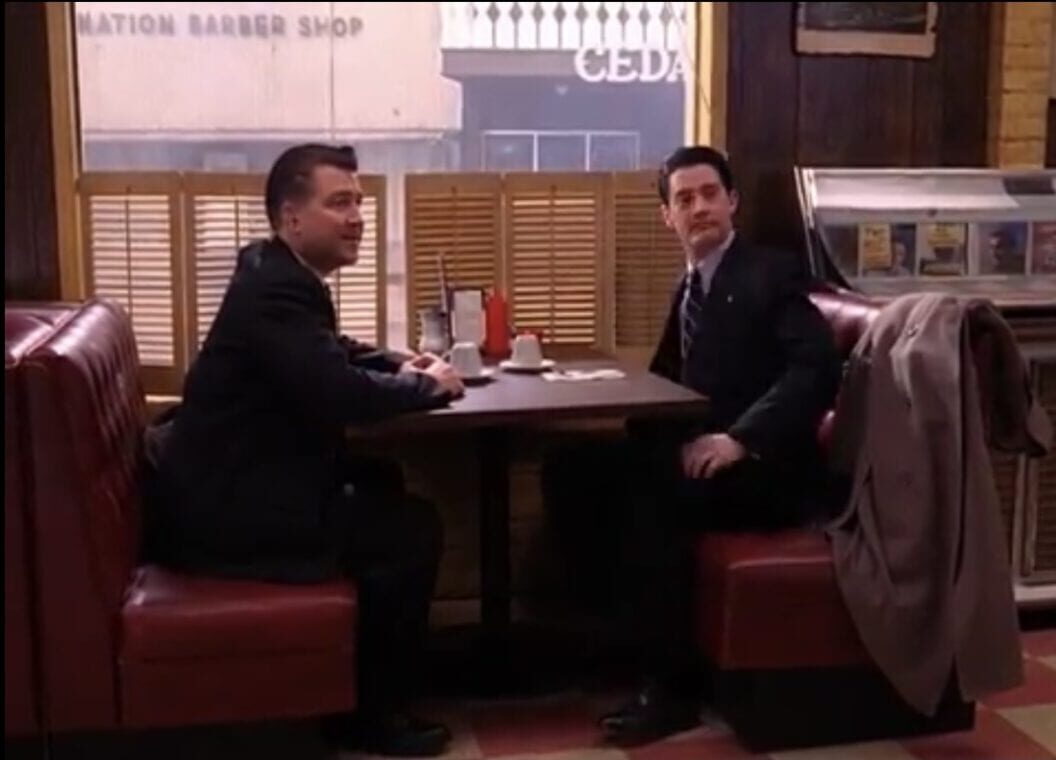
In-universe, I suspect the writers wanted Annie and Dale to work exactly like Shelly and Gordon’s suddenly special connection. It’s not a far reach: within two episodes, the two FBI men are suddenly smitten by two diner waitresses. The parallel can’t be missed.
I’ve always thought Gordon’s hearing problem comes from not being connected to this reality any more strongly than any other reality—hence how he can confidently classify a Blue Rose Case. He’s connected to everything the same way Lynch is connected to what he calls the Unified Field. Lynch gets there through meditation, while Gordon needs hearing aids to anchor his ears to the Marketplace (what Lynch has been known to call this physical world). It’s kind of like keeping some soil in your pocket per Major Briggs’ advice for Part 14 at Jack Rabbit’s Palace, yet the connection is still so faint that words need to be shouted over the remaining distance—except when Gordon has Shelly Johnson right in front of him, he knows what world he wants to be a part of. And he can hear that part of the world clear as a bell. Possibly because it’s easier to daydream about one’s wants.
We can easily believe Shelly—again, a character we’ve been allowed to get to know since the Pilot—could do something like that to Gordon’s hearing. But it doesn’t feel the same way with Dale and Annie. Their frequencies seem to be disrupted by each other, but not necessarily in a fully positive way.
It seems more than reasonable that there’s Lodge-related foul play afoot with Annie entrancing Cooper. Suspicion was so available that before Season 3 even aired, Lindsay Stamhuis and Aidan Hales described Annie as being a concept we’d essentially come to know later as a tulpa. This love energy Cooper is creating here has the possibility of being manufactured, but I’m still in the camp that Annie is a real human being. While I’ve expressed concern for how their relationship progresses too quickly, I still think Annie is the perfect person for Cooper to be with in Twin Peaks Episode 25, for reasons not even Audrey Horne could satisfy.
Annie Blackburn
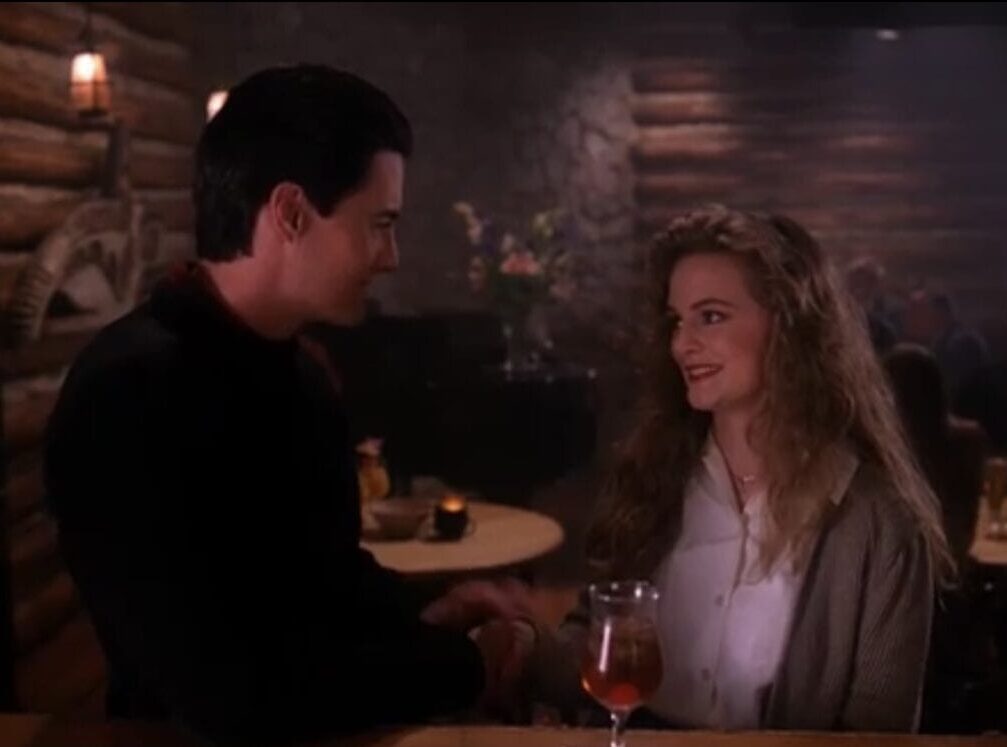
Audrey Horne has had nothing to do with Lodges, Giants, or even dream sequences. Sure, she’ll get there thanks to events after the bank explosion, but up to now Audrey’s been conspicuously unconnected to the supernatural.
Meanwhile, Annie’s connected to other worlds from minute one. She comes from a convent. She attempted suicide in an earlier life. She knows about Owl Cave and invokes Laura Palmer’s name when no else does. It’s hard to imagine a romantic interest better suited to enter the Lodge with Dale.
There’s one more thing they have in common: Annie is just as split in half as Dale. When she’s talking to Shelly, she can talk about how life inside the convent wasn’t that much different than out in the world, yet when she talks to Dale she can only say how unfamiliar everything is and how she can’t figure things out.
Is the disparity because she’s putting on bravado with Shelly, but with Dale she can reveal insecurities? Or is she able to confront her fears when she’s with Dale because he gives her a boost of courage? Dale makes saving her his next project regardless of the answers, thus making him central to both her happy, romantic feelings and the work of overcoming her past. In this way, Dale is a fulcrum for both sides of Annie just as much as she serves that role for Dale.
I wish there was more playful chemistry between them rather than the contractual conversation at the bar where Dale is basically auditioning to be the guy who saves/fixes Annie and her issues, but I’m still interested in the fact that Annie is openly shining a light on the points in her life where she’s stumbled. She’s being honest. She actually appears ready to work on her past trauma, but she’s connected to Owl Cave and therefore connects Cooper to the place where the petroglyph will be found.
The Owl Cave (and the symbol revealed later to be on the Owl Ring) rides in on Cooper and Annie’s feelings of love, just like Jones comes in through Harry’s love for Josie. And just like Harry, Dale recognizes the cave as something formidable.
A Place Both Wonderful and Strange
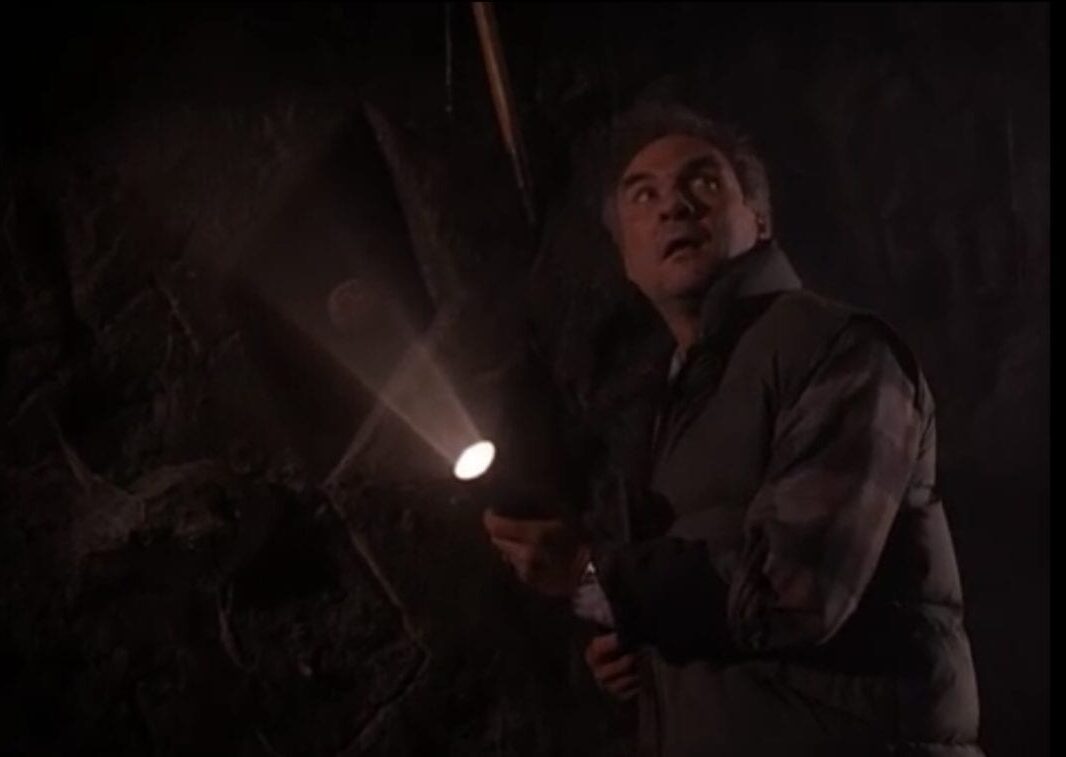
And here we are back to Windom Earle. While Cooper and the Twin Peaks Sheriff’s Department shine light on secrets, Earle rides in underneath to accumulate the revealed power. Except when revealing to Leo his plan to subvert the Miss Twin Peaks competition, Earle shows his magic is only sleight of hand and card tricks.
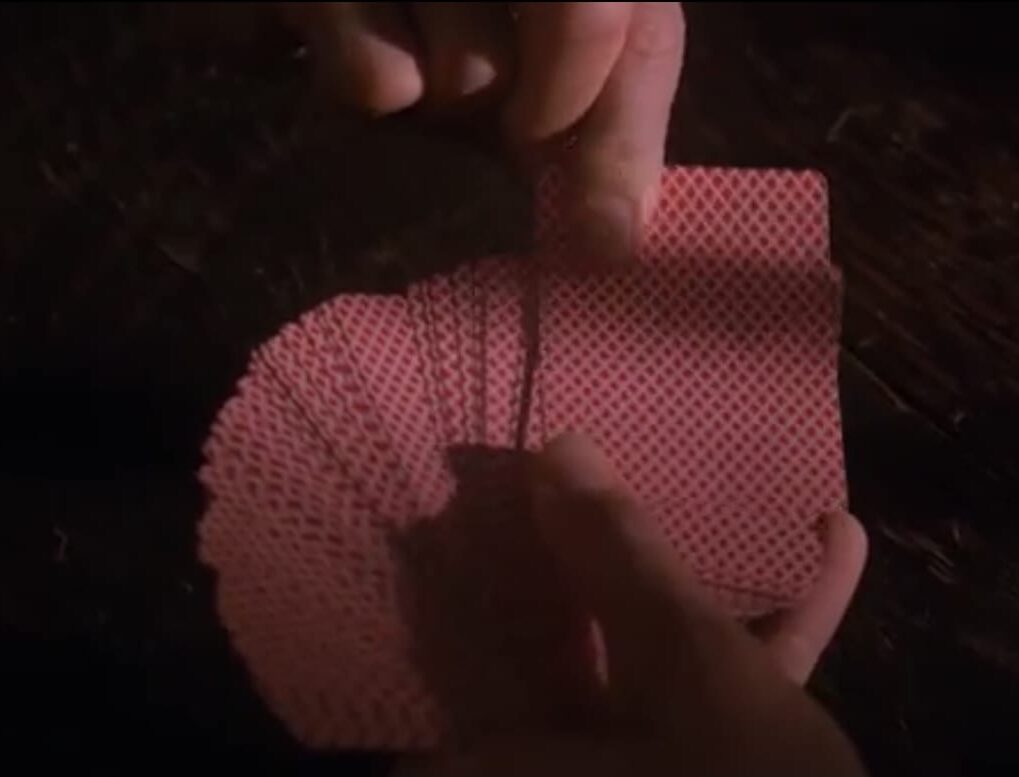
This moment is way before BOB reveals him to be a crafty fraud way out of his depth, though, so it still looks like Windom knows what he’s doing. Which is why I have to ask: What does he think inverting the symbol will do? And based on all we’ll see of the symbol, what is actually happening when Earle inverts it?
Does Earle believe that turning the symbol means he’s controlling the flow of the power of the natural order? Does the word “inverted” work something like tarot card inversions because he’s coming from a negative point of view? Has he come across the Owl Ring before, like notable power-grabbers Richard Nixon and Jack Parsons before him? These are all valid but ultimately unanswerable questions.
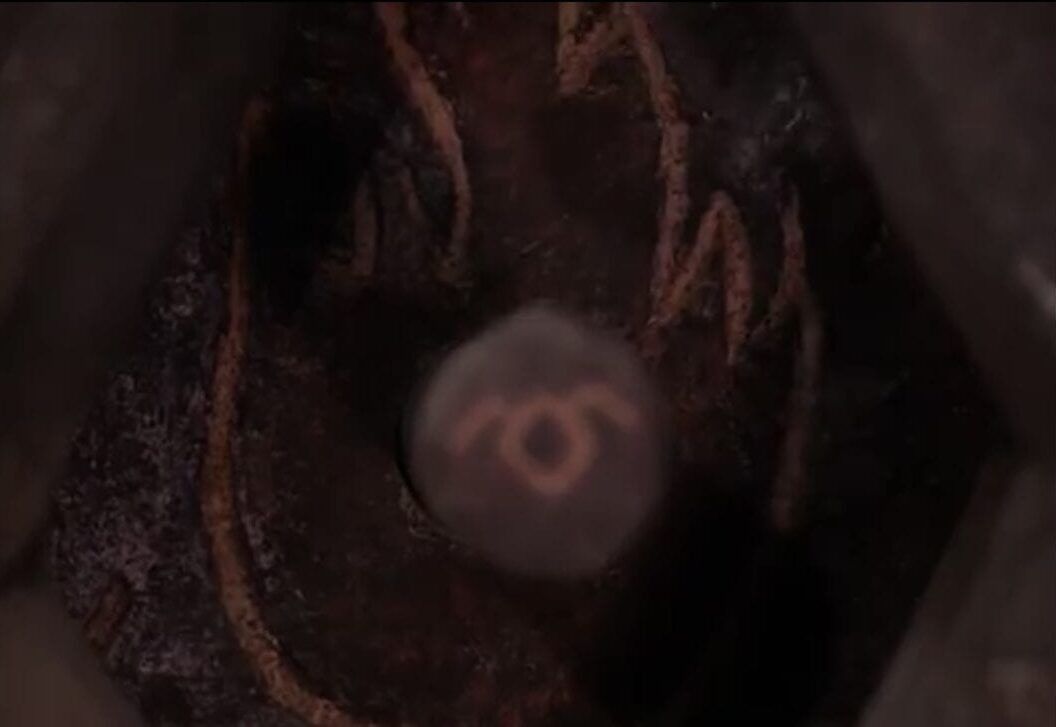
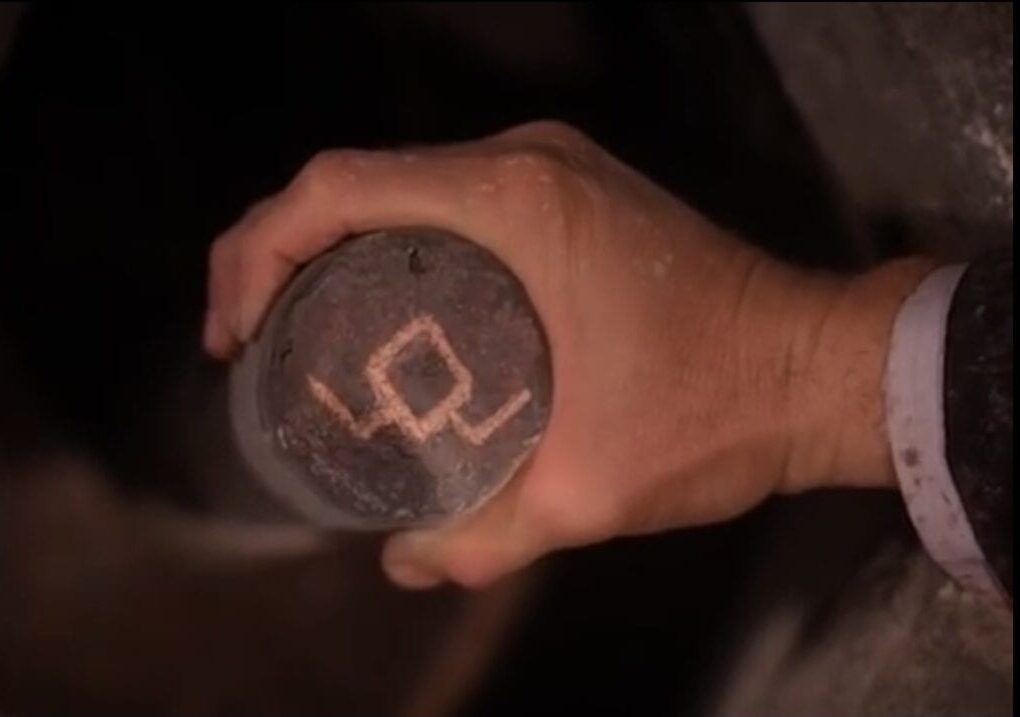
At this point, Earle—clearly under the spell of Twin Peaks—is more like the Batman ‘66 incarnation of the Joker than the calculated agent with the mind like a diamond we see in Episode 21. I assume whatever he believes is happening in Owl Cave is only what he wants to happen. But is it enough to make it true? 18-year-old Nadine and Robert E. Lee imply the answer is no.
Though we may never know exactly what happens when the symbol’s inverted, we can prove that a wall comes down between the world and a petroglyph with Lodge-related imagery. Now that the petroglyph can be seen and studied, it will eventually be understood enough to show points of literal connection between the worlds, thanks to Earle’s aspirations to tap into Lodgespace power for his own gain.
But like his card tricks, is Earle thinking too much about the literal connections between the world and Lodgespace? What if the petroglyph is more of a flowchart that maps the paths of the Lodgespace energy? Maybe the petroglyph is mapping how that energy flows over reality, and in that way, it works as a living map, the same as Hawk’s from Part 11. Maybe it can explain why the energy has been blurring between observable reality and dreaminess, and maybe it can’t. But I bet that petroglyph is very old, and it is always current.
I’ve been pleasantly surprised by how thematically relevant these “lesser” Season 2 episodes have become. Season 3 has found a way to bring these episodes closer into the fold. They’re still made of fun, campy goodness, but attributing it to overflowing Lodgespace energy really grounds it in show mythology. It feels so much more part of a whole, which is both strange, and wonderful.

